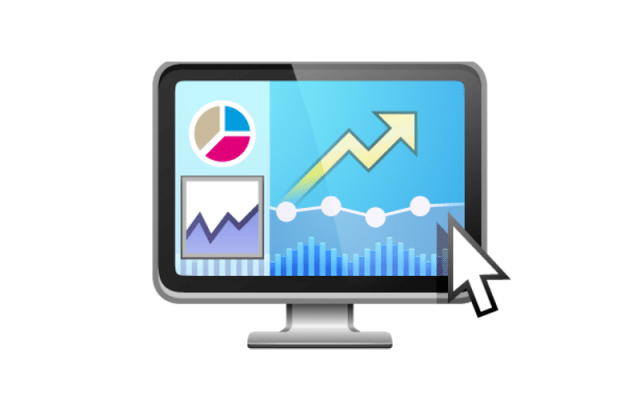Transitioning from a demo to a real forex trading account is every trader’s goal, given the riches always promised. While switching from a demo to a live account, in pursuit of passive income, is a straightforward process, it should always be approached cautiously.
Demo vs. real account
A demo account is a risk-free trading account that brokers offer traders to trade actual markets without losing anything. Demo accounts are similar to real accounts in all aspects, from instruments traded, quotes, and trading charts. While designed to offer a real-world trading environment, such accounts involve virtual money.

In contrast, in real accounts, people only trade with real money. One must deposit some money in a trading account offered by a broker to start selling. Any losses generated while trading eats into the invested capital, while profits add to the underlying capital.
Before transitioning from a demo account to a real account, there are many things that one ought to take into consideration.
Trading Platform & Market Orders on Offer
As offered by forex brokers, demo accounts provide insights on what one should expect on transitioning to a live market. Similarly, traders need to pay close watch to finer details in a broker’s demo account before making the big switch.

While leveraging a demo account, this would be the best time to analyze the trading platform focusing on the user interface, among other features. The user interface should be friendly enough for easy navigation and execution of trades.
The platform should allow the placing and exiting of trades in real-time without delays, as timing is of the essence in trading. Likewise, it should feature all the indicators and tools needed to carry in-depth technical and fundamental analysis. The trading platform should also offer support to a wide array of market orders, stop-loss orders, and profit orders for various trading strategies.
Documentation
A transition from a demo to a live account would only be complete upon a trader furnishing a broker with the relevant documentation that proves their identity and residence area. Legal documents are essential as it is the only way brokers get to know who they are dealing with and fulfill regulatory requirements.
For approval, a trader must approve any government-approved documentation that validates their identity. Such documents may include Identification cards, passports, or even utility bills.
Beyond identity documentation, one might be required to sign some legal documentation provided by a broker’s attorney.
Funding
One can only start trading in live markets on depositing some money in an account offered by a broker. In real accounts, it’s all about taking real money and not virtual money. Likewise, one must invest some capital to be able to buy and sell various currency pairs.
The amount of money required to start trading in a live account varies from one broker to another. While some brokers require a minimum balance of $50, others require traders to deposit a minimum of $200. Similarly, the amount of money to start trading, in live accounts, often comes down to what a trader wants to achieve and their trading strategy.
The channels of funding live accounts vary from one broker to another. However, most brokers accept bank wire, transfer, checks, and electronic wire transfers in the form of PayPal, Skrill, etc. Proof of identity is critical as it allows brokers to clamp down on money laundering that might occur when it comes to funding an account.
Funding of live accounts can take a few minutes to days or weeks, depending on the options one uses to transfer money into their trading account.
Psychology Component
Being in the right frame of mind is essential before making the big switch from a demo to a real account. Unlike in the demo account, fear and anxiety often kick in whenever actual money is on the real accounts line. Trading with emotions is why most people lose money on failing to follow clear cut strategies tried and tested in demo accounts.

In a demo account, one usually has the freedom to take any other trade, as there is usually nothing at stake. However, in live markets, it’s a different ball game. Likewise, one ought to be in the right frame of mind psychologically to shrug emotions and stick to a rule-based trading strategy.
The right psychology entails not being afraid to lose money. Likewise, one can maintain the highest level of discipline that allows them to trade when necessary and when a high profitable opportunity crops up.
Success in forex trading is about having the right psychology that entails embracing losses while taking calculated risks that rhyme with a set risk-reward profile. With the right psychology, traders understand that even though losing trades is a must, there is a high chance of being profitable while sticking to a proven trading strategy.
Bottom Line
Switching from a demo account to a real account is relatively simple and straightforward. However, the process should not be hurried, especially for people getting started. If you are not profitable in a demo account, chances are high you are likely to struggle a great deal while trading in a real account.
Similarly, just because you are generating big wins in a demo account does not mean you have perfected the art of trading and ready to go full throttle in a live account. Market conditions are continually changing. In live accounts, emotions are a key factor and often affect judgment and decision making.
One of the keys to a successful demo to live market transition is resisting the urge of trading based on feelings. Take your time to develop a proper trading plan and back-test it in a demo account to ensure it generates the desired returns. With the right psychology backed by a tested strategy, funding a trading account should follow suit to complete the big switch from a demo to a real account.




